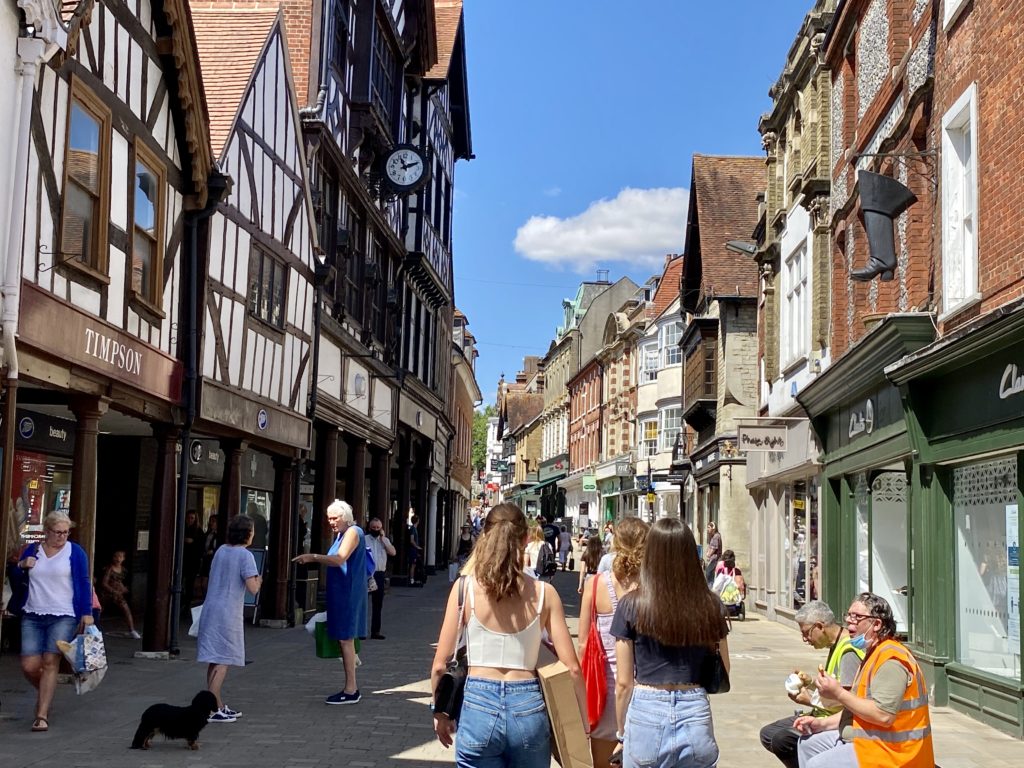
The pedestrianised high street. Photo: © F.Hardy
Peter Welcome to Action Packed the travel podcast that goes to the best places and meets the most interesting people. This week we’re featuring our first destination episode.
Guide Our most famous person, who probably most visitors in Winchester are coming to see is Jane Austen.
Beth There’s a lot going on. If you look under the hood.
Heather Up and down the whole way, unrelenting, it’s more of a challenge. It’s something that’s on lots of people’s bucket list today.
Peter This week, Felice and I are travelling at last to our first post-lockdown destination and we’ve chosen somewhere in the UK. It’s the small and beautiful city of Winchester in Hampshire, which lies just about one hour from London to the southwest by train and about the same, about 70 miles, if you’re driving.
Felice At the moment, we’re standing on St Giles Hill, which is a stretch of greenery and woods all the way down to the high street. And from there we can walk, it takes about five minutes to the cathedral. Winchester is a great place to live. It’s safe. There isn’t much crime, it has some very good schools, and apparently it even has particularly good weather as well. It’s been named as one of the best places to live in Britain.
Peter I suppose we’re only about 20 minutes from from the coast here, we’re half an hour into the new forest at Lymington and places like that. So we’re almost on the seaside here.
Felice Well, not quite, but we can probably get there in about 45 minutes if we’re lucky, if the traffic isn’t too bad.
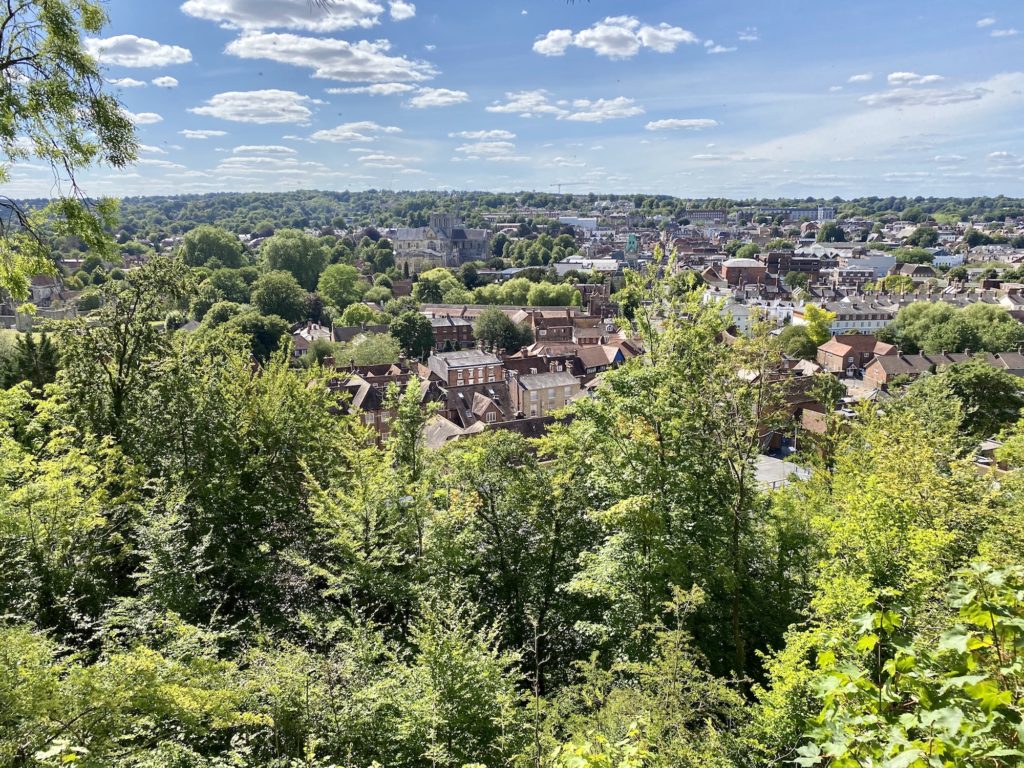
View to the city from St Giles Hill. Photo: © F.Hardy
Peter Anyway, each summer for hundreds of years, where we are now up on St Giles Hill was the setting for what was the largest medieval fair in Europe. There were merchants from Spain and Provence who brought jewellery and silver, Italians sold silk, and rich and rare spices from the east. I tell you, it was the best gig this side of the Bosphorus. People came from everywhere. There was wine in huge quantities shipped in from Gascony. There was lace and brassware from the lowlands, from Holland and from the Rhineland I guess. There was always everything the modern medieval man or woman desired to be traded here. There were jesters and tumblers, prostitutes and pardoners, all hawking their wares up here for a whole month each year. There was also, according to scholars, a mighty menagerie described as ‘Strange beasts and birds and bears and ferrets’.
Felice Well, the only one I can see that looks like a bear is a brown Labrador Jackson. And as for a beast…well our naughty Jackapoo – half Jack Russell, half poodle – he fits the bill. A strange beast.
Peter Come on, boys.
Felice The reason for our dogs’ presence and also ours today is that this is our home. Winchester is where we live. As travel writers, we spend a lot of time on the road going all over the world. We’re really lucky. But we’re always very pleased to be home in Winchester again.
Peter I think originally when we arrived here with small children from what was then a very overcrowded London…
Felice… and still is.
Peter We never looked back, really. It’s been a great place to live and bring up a family. And it’s also an enjoyable place for a visitor for a short break, a weekend.
Felice But you must make sure you book well in advance. There are lots of hotels and B&Bs, but they do get very full, especially in summer and also in winter during the Christmas Market, which is November and December.
Peter I guess historically were also not alone in making that migration from the big smoke. King William the Conqueror, the guy of 1066 fame, he did the same after his coronation at Westminster. And it comes as a surprise to many that little Winchester was, in fact, for 250 years the capital of England.
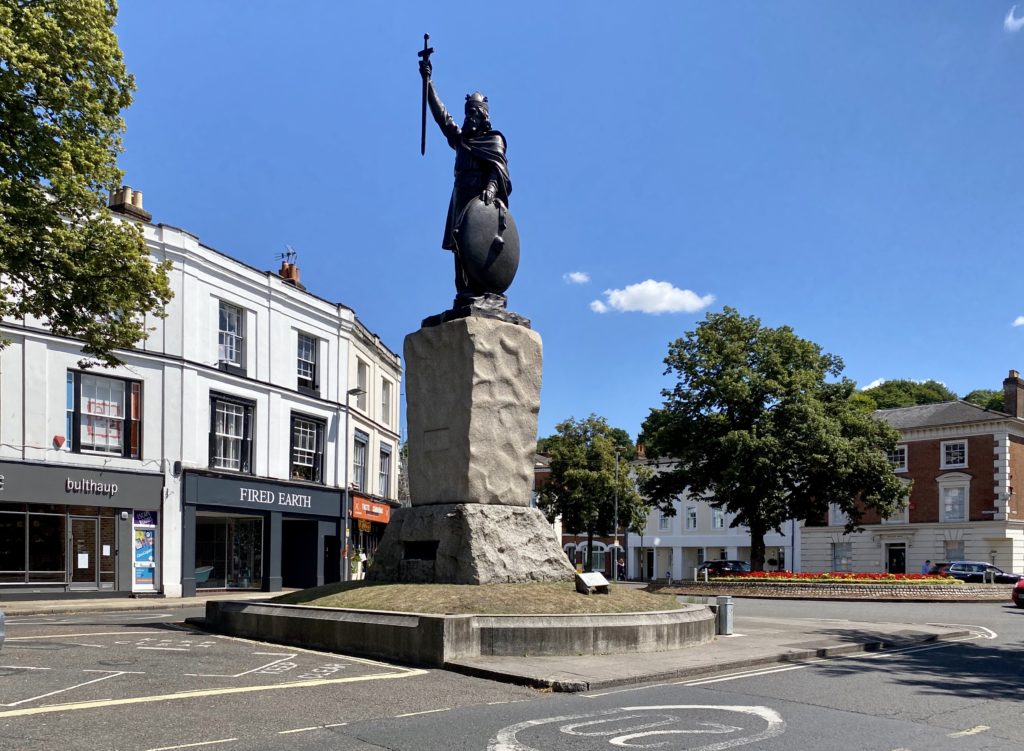
King Alfred’s statue. Photo: © F.Hardy
Felice So a steep walk down takes us to a great big statue of King Alfred. And he’s called Alfred, not Arthur. Don’t muddle them up.
Peter Yeah, well, there is a bit of confusion here because King Arthur belongs to the other end of town. There they have a… I was going to say a copy of the roundtable…they have their own table. It’s been dated to 1250, 1280, that sort of thing. And it’s a big round table or table top. It hangs on a wall in Winchester Castle. The confusion here is, of course, is that we have to explain to visitors that King Arthur was not a real guy; it’s the part of the Arthurian legend and that table is part of the legend as well. Whereas King Alfred was King Alfred the Great. He was King of Wessex and this was his throne.
So here we are at the cathedral. At the moment this mighty building is still in partial lockdown. The services are largely held on Zoom, although there’s a live service on Sundays and on Wednesdays. The choir is not allowed to sing, although they do allow one person to use the microphone. The often-flooded crypt with its life-sized sculpture by Antony Gormley is still closed to the public. It’s about a man contemplating his watery surroundings. It’s really absolutely splendid and when the crypt is fully flooded there’s just the head and shoulders sticking out. It’s an extraordinary sight. Also there’s the 46 metre cathedral tower. But tour guides are still on hand in the nave, happy to tell socially-distanced visitors a bit about its history.
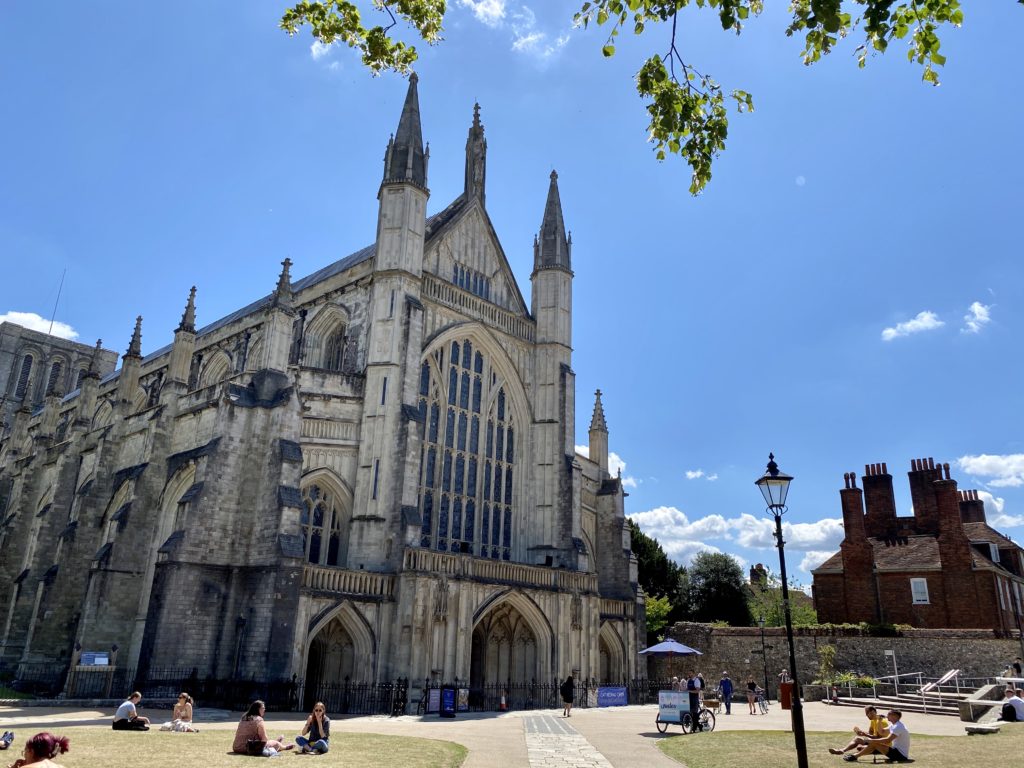
Winchester Cathedral. Photo: © F.Hardy
Guide It’s one of our earliest cathedrals, a Norman cathedral, which was built following the Norman Conquest in 1066. And so it’s been one of the very first cathedrals to develop each style of English medieval architecture. And what I think is particularly fascinating about it is you can see that transition of ideas, that evolution of ideas.
Peter We’ve had a famous Royal Wedding here, am I right?
Guide Yes. We’ve had the wedding of Mary, Queen Mary to Philip of Spain. And that was here in the nave.
Peter The crypt, which you can’t get down to sadly today. But tell us tell us about the crypt?
Guide Oh, the crypt is fascinating. So the crypt was the first part of the cathedral to be built, so it’s very early, Norman. When they built it, they didn’t know that the cathedral flooded. But because it floods, it’s never really been able to use for functions that crypts normally serve: services for burials, etcetera. And so I think it’s one of the finest pieces of cathedral to visit because it is so completely original.
Felice Why does it flood?
Guide Because of the rainwater level, Winchester is a flood plain.
Peter And there was a problem with the cathedral tilting at one stage?
Guide Yes, at the turn of the 20th century, the entire east end began to fall away. The east end was remodelled in the 1200s when the idea of going off on pilgrimage really began to take off. And they rebuilt the east end to accommodate the pilgrims, where the pilgrims came to visit the shrine of St Swithun, patron saint of Winchester. When they were remodelling east end and the builder’s dug down, they discovered the floodwater. But of course they had no means to do anything about it. So what they did was to lay down logs and they built the east end on the logs. So over time the logs went down for various reasons, and the east end began to fall away.

Bridge over the Itchen. Photo: © F.Hardy
So the problem then is substance; they couldn’t simply underpin. What they had to do was to get down beneath the foundations, because what had happened is the River Itchen used to flow through there and it was moved by the Romans. But of course nobody told the water, which is percolating down from the chalk hills there. So the water level there is very, very high. So what they did was from the leading German firm of divers at the time, pioneers in the area…they had the chief diver called William Walker, and what William Walker did was to go down.
They built shafts all around the cathedral and he went down, down, down into this water. And the water was so murky that he couldn’t see what he was doing. So he’s doing it all by touch. So he went down to the layer above the old chalk and gravel river bed and that’s where they needed to seal that area to stop the water coming in. And then they passed down to him sacks of concrete, and he laid them down. The water was already there. That set it solid and that meant they pumped the water out.
Peter We’re talking about someone wearing a Victorian diving helmet, are we?
Guide Yes, absolutely.
Peter And someone on the surface pumping it down to him?
Guide Absolutely. And so these shafts went down a long way. He had to go down the shafts.
Peter. Do you know how deep?
Guide I didn’t know how deep exactly. It was quite a long way. And health and safety nowadays…What they did was they had a matchstick in the shaft and his signalman would signal to him if they saw the matchstick move, so his life was depending on a matchstick really. I know there are three statues of William Walker. And this one outside the refectory, which can be seen and there’s one that’s kept hidden away because it was modelled on the photograph of the William Walker, the diver and also the engineer.
The engineer at the time had to wear diving kit because he’d gone down to supervise, inspect the works. And when the family came to see the bust of William Walker being unveiled, they realised it wasn’t him at all. It had been accidentally modelled on the engineer. So that one is hidden away.
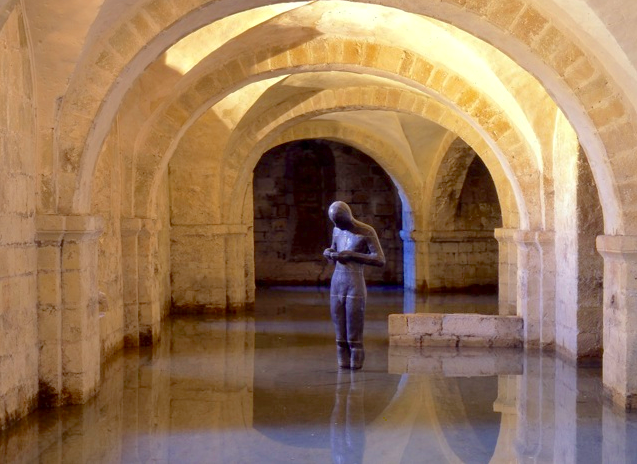
Antony Gormley’s sculpture. Photo: © Anthony Crook/Winchester Cathedral.
Peter And at the other end of the cathedral, or rather, upstairs in the cathedral, you can climb up to the steeple?
Guide It’s no steeple because it’s Norman. There’s a tower, you can climb.
Peter The public can climb up?
Guide Yes, they can go on a tour.
Peter And is that quite difficult to do? I know you can’t at the moment.
Guide It is, because it’s Norman it’s spiral and very steep. But if you’re interested, it’s well worth doing it. We’re standing here on the nave, which is when the longest medieval naves in the country. And what you do is you go through a door at the west end to the nave, which is where you come in, and you get up these steep, steep, steep steps round and round – not good if you’ve got claustrophobia – and then you walk all the way along the top of the nave around this wonderful vaulted ceiling we see here. And so you see the original Norman timbers.
And the story is that when Bishop Wakelin, who was the first Norman bishop of Winchester, wanted to build the roof, he asked the king if he could take timber from one of the royal forests nearby. And the king said, yes, he could take so much in a limited time. And when the king went back, he found there was literally one tree left standing.
Felice And there are some pretty famous people buried here, aren’t there?
Guide Our most famous person who probably most visitors in coming to see is Jane Austen, who died in Winchester. She didn’t live in Winchester, she lived near Winchester about 15 miles away. But she became ill in 1817 and moved to The Lodge in Winchester, which is the county town. Very unusual at the time, it had a purpose-built hospital. They hoped they could save her, but sadly they couldn’t.

Peter And the interest interest in her is as big as ever?
Guide You have people from all over the world, a lot of people come especially.
Felice That’s enough of the cathedral. There’s a whole lot more to Winchester than history and religion, although I should really mention St Swithun, who’s the cathedral’s patron saint. He lived in the ninth century and his main miracle involved a peasant woman and a basket of eggs. One day she was crossing the bridge over the river Itchen when a group of men jostled her. She dropped her basket and the eggs all smashed. And the bishop, who was passing at the time, put the eggs back together again. Bit like the nursery rhyme, really. But St Swithun is better known as a weatherman, it’s said that if it rains in Winchester on his feast day, which is July 15th, it’ll rain for 40 days.
Peter So find out what makes modern Winchester tick, we met up with Beth Lawless, yoga teacher, weaver, and local podcaster. Beth, you know Winchester very well. There are two sides to Winchester – there’s the staid, traditional cathedral side, you might say, and then there’s a vibrant undercurrent and you are very much a part of that. Tell us about it?
Beth Oh, goodness me, well, that’s exciting. And also a great deal of pressure to fairly represent all of the different facets. There’s a lot going on if you look under the hood. So probably the most obvious thing to start with is the Hat Fair – that’s the glorious intrenched festival that happens every summer.
My earliest memory of the arts in Winchester was being a small person wandering around looking at all of those very talented street artists. It’s the oldest, longest running street arts festival in the world. It’s the first year that hasn’t happened in I think I’m right in saying about one hundred years.
Felice When does it normally take place?
Beth It’s June. So first weekend in June it usually happens. And it’s a celebration of all things mad. Hat Fair comes from the term hatters, which is where the street artists used to put their hat on the ground. And then you would make a little donation into that small, trend hats. But it is just street performance. So performers from all over the world trek into Winchester. And there’s this is very strange influx of very different-looking people on the streets of Winchester for a weekend, which is lovely.
Peter So this is the modern aspect of what I talked earlier – the medieval fair that took place. So this is the sort of modern version of that?
Beth Yeah, well, I mean, festivals have been in part of human beings since the beginning of time, really. This is just a very contemporary version. I mean, there’s so many different types of artists in Winchester. So we’ve got two universities in quite a small space, and a theatre which we’re very fortunate to have. So this, all of those different establishments are involved in the Hat Fair doing different things.
Felice The Hat Fair I know has acrobats.
Beth Yeah. Well, so it takes place over three days, which is very exciting. The first day is very gentle. The second day is the Saturday, which is was always massively heaving and things wander up and down the high street. And then on the Sunday is the big family day, so that’s really exciting. But there’s two huge performances that happen on the Sunday evening and on the Saturday evening. And that’s where you get your sort of big, shiny professional street artists come in and do something wonderful, like last year or the year before last, they set fire to a bus.

View through to Abbey Gardens, Winchester. Photo: © F.Hardy
Felice So I missed that.
Beth It was very exciting. Literally, you overturn any rock in Winchester and there are artists underneath it.
Felice But what overall, what do you love the most about Winchester?
Beth Oh, that’s such a difficult question. Since you invited me on this fantastic podcast, I’ve been pondering what is my favourite part of Winchester. So at the moment it’s a very strange time, but normally my favourite things in Winchester are…well the Water Meadows…that’s a little bit traditional, but the Water Meadows are absolutely beautiful, just stunning, and they’re so close to the city.
Peter Of course they’re famous for John Keats.
Beth Absolutely.
Peter In 1819 he spent a lot of time here and he wrote some of his most famous poems. Ode to Autumn was probably the biggest. But I’ve now discovered that scholars actually think he didn’t write that while walking around the Water Meadows, he did it while walking at the bottom of St Giles Hill on a meadow that is now the Chesil Street car park. You have to use your imagination when you look at what is a 1960s, 1970s high storey car park.
Beth Back in the day it would have been much more beautiful.
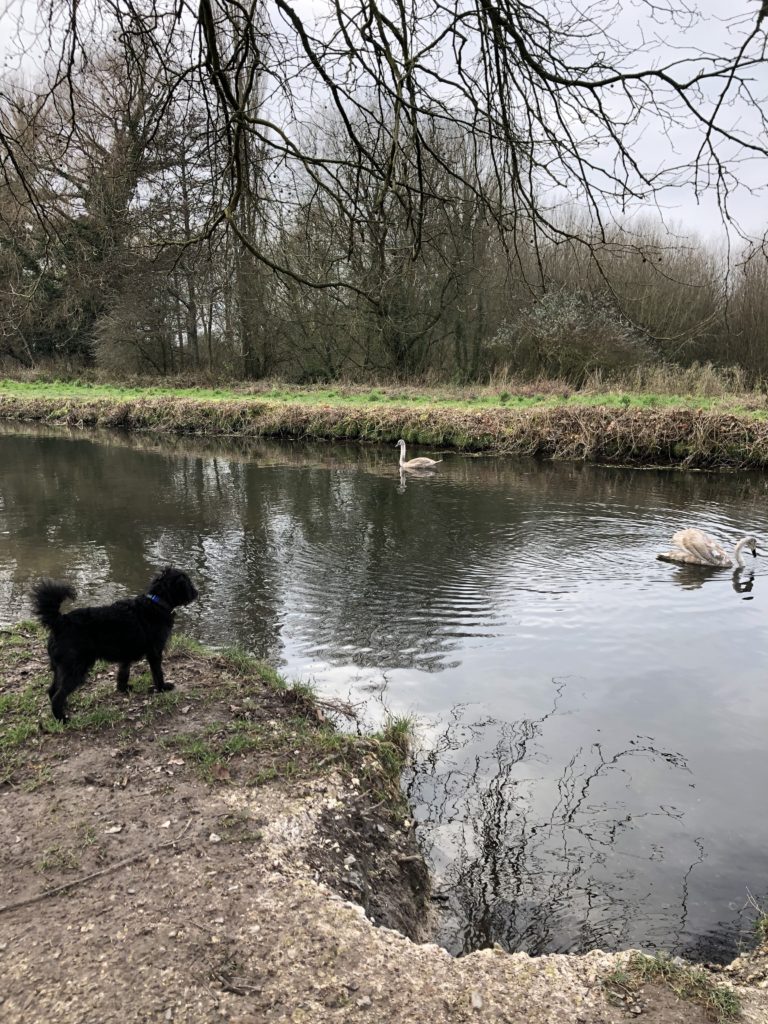
The Water Meadows. Photo: © F.Hardy
Peter I think that’s right.
Beth The best about Winchester is the fact that it’s small enough to be involved in your community so frequently. I know the name of the lovely Elsa who makes my coffee every morning, I know who I’m going to see…Phil, who makes the bread in Sainsbury’s, I know all of these creatures all the time, and it makes you feel like you matter somehow.
Peter Beth, you have your own podcast as well. Can you tell us a little bit about it, what it’s called?
Beth I do. I have a podcast. It is called the Hippy Dippy podcast. And the general premise is I present all things hippy and dippy to great friend, Michael Dorey. He’s very sceptical of all things in the world – except science, which, of course, he doesn’t understand. So it’s very easy to just gently scratch away and make him quite confused. So that’s nice. That’s all we do is really, just explore things that we don’t fully understand. But it’s quite good fun.
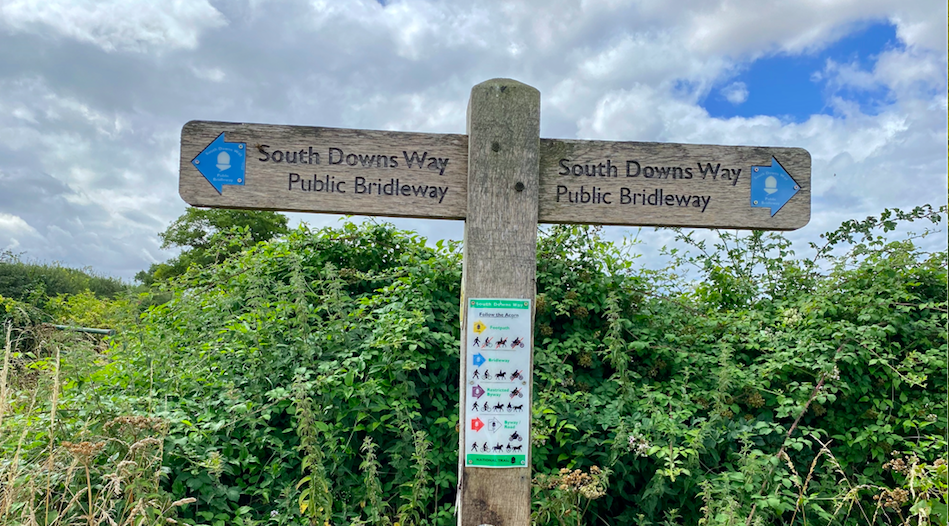
Photo: © F.Hardy
Peter Cycling is an increasingly popular means of transport in and around Winchester. The city is the starting point for the South Downs Way – that’s 105-mile off-road track that takes dedicated mountain bikers all the way across the scenic South Downs National Park to the Sussex seaside town of Eastbourne. Heather Evans runs the Bike Hub Community Cafe and Workshop for – forgive the pun – expertly recycled unwanted cycles, and gets them back on the road. Heather is dedicated to getting more people into the saddle.
Heather We began just doing bike repairs and cycle training and then branched out into bike hire and people hired bikes for the South Downs Way. You need to look at the profile of it because often people’s image of it, especially tourists, is that oh, it’s nice boarded ride through the South Downs, gentle hills. No, no, no, it’s lots of ups and downs.
We’ve had some great groups do it over the years that we were doing bike hire. A couple of lads flew in from America, landed at Heathrow Thursday night, picked up their bikes Friday morning. Off they went. We’ve paired up with a guy in Eastbourne. They drop them off when they arrived and then drove back to Heathrow and flew out again. We always get the ones that think they can do it in day. We’ve got a useful article on our website all about the best advice perhaps to go about doing it.
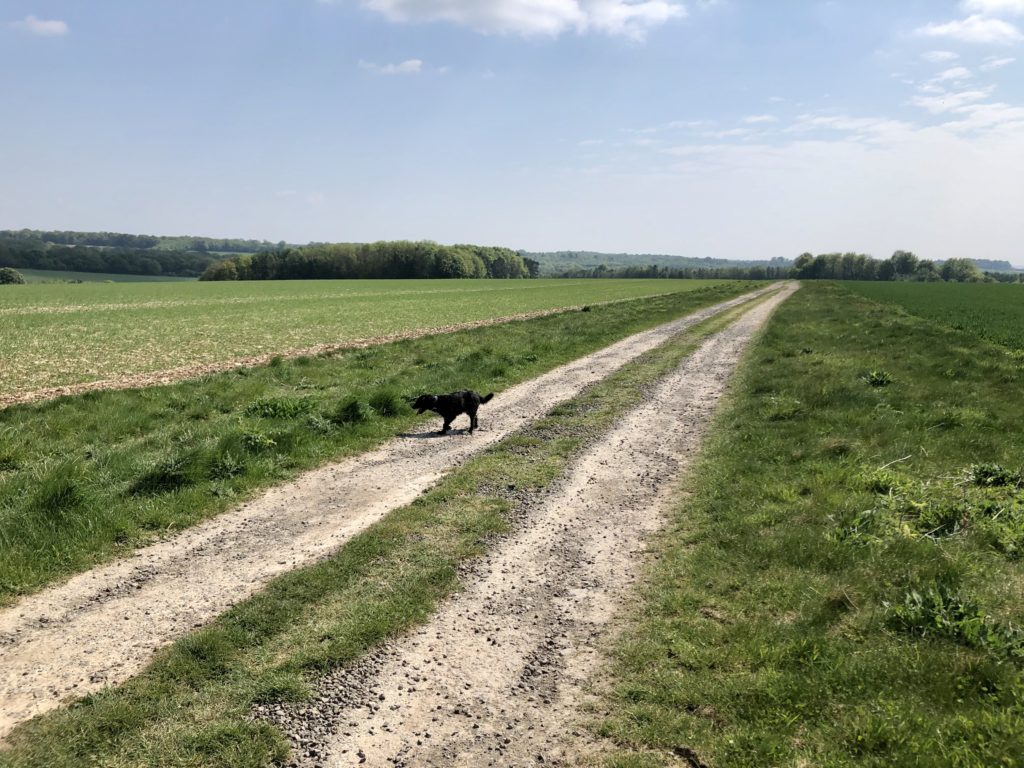
Part of the South Downs Way near Winchester. Photo: © F.Hardy
Peter Can you tell us where the website is?
Heather It’s Bespoke Biking, and then there’s a section, I think it’s ‘find out more’ and you’ll see the article there. We also have an article about buying e-bikes. We say to people, most people, two to three days, and if you want to enjoy it take four. It will be interesting to see how things go, post-Covid. But we hope visitors will come and we’ll be ready with our offer. At the moment we haven’t got any bikes for hire – because we’ve got hybrid city bikes, but for mountain bikes we can’t get any replacements. There’s a global shortage, too. I think February next year, hopefully by next spring, we’ll be fully functioning again. People say to me: ‘Winchester is not great for cycling.’ And I think it really is. So I thought, well, I’ll prove it is…and there are issues, obviously.
Peter It’s quite hilly, isn’t it?
Heather It’s hilly and there’s traffic control issues and all of that. But nevertheless, not a day goes by that I don’t enjoy riding my bike round Winchester. The other thing that we’ve had, some people create lovely routes from Winchester and we’ve got a lot of expertise on the team so we can find out what people want to do and give them a route to do.
There’s one guy I remember again, a Canadian. He flew in, had a bike for 10 days from us, which is a long hire, and he did cathedrals. He went from Winchester to Salisbury, Salisbury to Stonehenge, Stonehenge to Glastonbury Tor. Glastonbury to Bristol, Bath and then Bristol. And then he rode back again.
Peter He must like Cathedrals.
Heather Every day he sent us a picture of his coffee, a cake, his book and his feet and there’s a cathedral – one of the cathedrals – in the background.
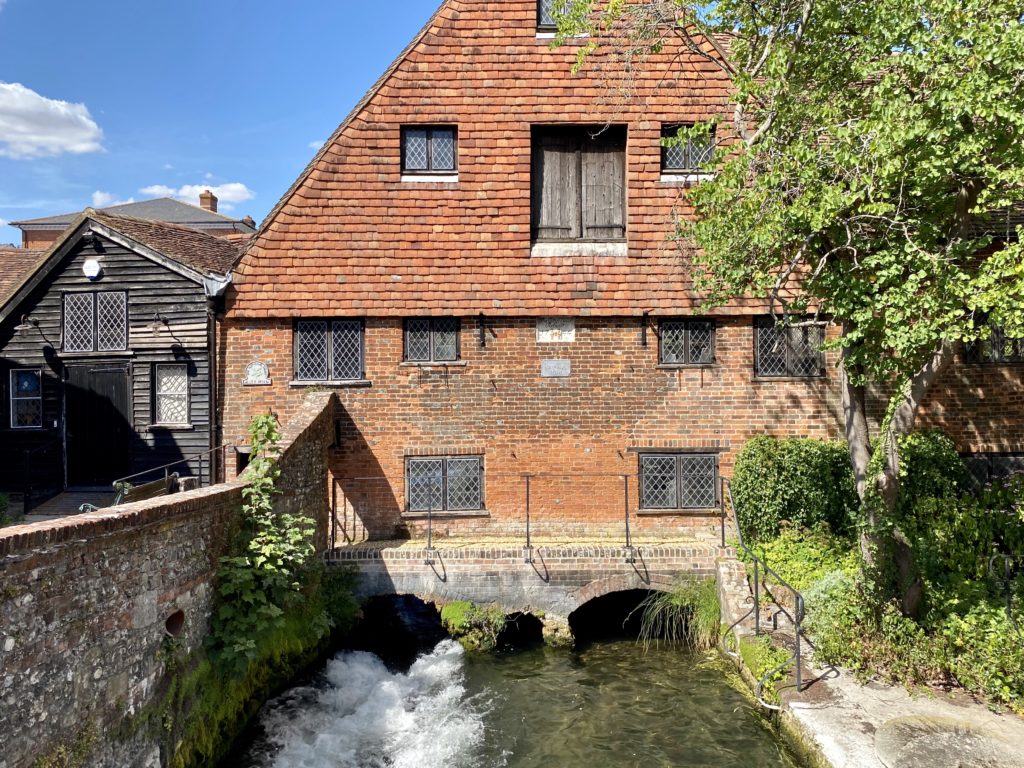
The National Trust’s working flour mill, Winchester City Mill. Photo: © F.Hardy
Peter Well, I think it’s time to get on our bikes ourselves and back up St Giles Hill. Fortunately they’re e-bikes, which really takes the sting out of steep terrain. Nevertheless, I think we’ll leave the South Downs Way for another day.
Felice That’s all for now. If you’ve enjoyed the show, please share this episode with at least one other person! Do also subscribe on Spotify, i-Tunes, Stitcher, or any of the many podcast providers – where you can give us a rating. You can also find us on Instagram, Facebook and Twitter. Stay safe and we’ll see you next week.
© ActionPacked Travel

- Join over a hundred thousand podcasters already using Buzzsprout to get their message out to the world.
- Following the link lets Buzzsprout know we sent you, gets you a $20 Amazon gift card if you sign up for a paid plan, and helps support our show.



